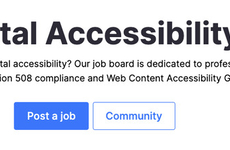
IKEA Addresses the Needs of People with Disability
IKEA is implementing a comprehensive digital accessibility initiative that is designed to make its online platforms and in-store technology more inclusive for customers and employees with disabilities. This development includes the launch of multiple technological solutions, including sign language interpretation services, assistive technology resource libraries, and an innovative navigation tool. The last device is currently being piloted in Finland and it provides audio guidance in over 30 languages for visually impaired shoppers and non-native speakers.
To ensure systemic implementation of its digital accessibility initiative, IKEA has established a dedicated Digital Inclusive Design, Equity & Accessibility Centre of Expertise (Digital IDEA CoE) that integrates accessibility standards into all digital development processes. This center conducts extensive research through nearly twenty global studies and academic partnerships with institutions like Delft University of Technology, while also implementing practical measures such as automated accessibility checkers and an updated design system that embeds accessibility features by default.
Image Credit: IKEA
To ensure systemic implementation of its digital accessibility initiative, IKEA has established a dedicated Digital Inclusive Design, Equity & Accessibility Centre of Expertise (Digital IDEA CoE) that integrates accessibility standards into all digital development processes. This center conducts extensive research through nearly twenty global studies and academic partnerships with institutions like Delft University of Technology, while also implementing practical measures such as automated accessibility checkers and an updated design system that embeds accessibility features by default.
Image Credit: IKEA
Trend Themes
1. Inclusive Digital Solutions - The advancement of inclusive digital solutions reflects a paradigm shift towards technology development that prioritizes accessibility for individuals with disabilities.
2. Assistive Technology Integration - Integrating assistive technologies into retail platforms presents opportunities for creating more user-friendly experiences tailored to diverse needs.
3. Multilingual Navigation Tools - The development of multilingual navigation tools can transform shopping experiences for visually impaired and non-native language speakers, making environments more accessible and inclusive.
Industry Implications
1. Retail - The retail industry is increasingly incorporating digital accessibility tools to enhance customer experience for individuals with varying needs.
2. Assistive Technology - The assistive technology sector is poised for growth as retailers seek to enhance their offerings to be more inclusive of individuals with disabilities.
3. Higher Education & Research - Collaborations between academia and businesses in digital accessibility initiatives create opportunities for innovation and knowledge sharing in the higher education and research industry.
8.7
Score
Popularity
Activity
Freshness























